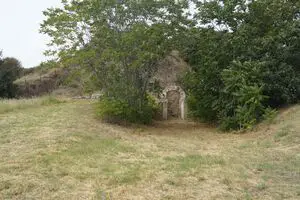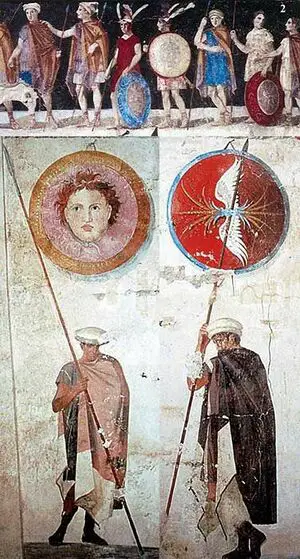What Were the Origins of Ancient Macedon (aka Macedonia)
The most well-documented period of ancient Greek history and probably the best-known era of all Greek history, modern and ancient, is the Hellenistic Period (323-31 BC). The Hellenistic Period was marked by well-detailed sculpture, monumental architecture, excellent literature, and the overall expansion of Greek/Hellenic culture to the Near East. The ancient kingdoms of Egypt and Babylon took on an increasingly Greek character during the Hellenistic Period. Still, perhaps somewhat ironically, the “Greekness” of those who brought Hellenic culture to the east was often questioned.
It is impossible to separate the Hellenistic Period from the ancient Macedonians, as Alexander the Great, who was from Macedon, essentially started the period. His Macedonian generals and successors continued the program of “Hellenization” in the east until the Mediterranean basin was conquered by the Romans. Yet, for centuries the Greeks of the classical city-states did not consider the Macedonians as the same people, even if they did speak a dialect of Greek. Born from wandering Indo-European tribes in the early Bronze Age, the Macedonians became a cultural group closely related to the Greeks of the city-states in language and culture, yet always a bit different. The Macedonians prized war even more than their Greek cousins and practiced monarchal government long after the city-states began experimenting with republics and democracies.
Greek or Not?
To understand the origins of ancient Macedon and the Macedonian people, it is important to understand how they were related to the Greeks of Athens, Sparta, and the other traditional Greek city-states. The Kingdom of Macedon, sometimes known as Macedonia, was located in what is today the northern part of the nation-state of Greece, but in ancient times its place in the Hellenic world was often dubious. Like the Greeks of the city-states, the Macedonians were descended from Indo-European tribes that migrated to the Balkans in the Late Bronze Age, particularly the Myceneans and the Dorians. Most modern scholars believe the ancient Macedonian language was a dialect of Greek.[1] The Greek language was a critical element of ancient culture’s identities, but it was not the only factor. More importantly than language, though, the Macedonians shared many cultural affinities and attributes with the Greeks of the city-states.
The Macedonians enjoyed banquets/symposia just like the other Greeks, [2] but more importantly their burial methods reflected those of the Bronze Age Myceneans, who were essentially the ancestors of the classical Greeks. The Macedonians interred their deceased nobles in large tumulus-style tombs that employed vaulted roofs to help them survive the tests of time. [3] The tomb style reflects the religious similarities between the Macedonians and the city-state Greeks: the Macedonians, for the most part, worshiped the same gods as the Greeks followed the same rituals, with some local variations. [4] Later, the similarities between the Macedonians and the Greeks of the city-states became even more numerous, but early in classical Greek history were also notable differences.
One of the defining aspects of classical Greece, and most of modern Greece for that matter, is the land’s proximity to water. Most of Greece is a collection of peninsulas, isthmuses, and islands, which created a culture where the people thrived on the sea for food, trade, and success in war. Though, the Macedonians were, for the most part, landlubbers and only later in their history developed a navy, which was for the most part comprised of Greeks from the city-states. [5] There is also no evidence that the Macedonians claimed to be Greek before the Persian Wars (499-479 BC), [6] which suggests that the Macedonians really did not care how their cousins to the south viewed them until the fifth century. According to the classical historians, both the Macedonians and the Greeks of the city-states began to see the former as Greeks after the unifying experience of the Persian Wars, even if the latter group viewed them somewhat as rubes.
According to the fifth century BC Greek historian Herodotus, Alexander I (ruled 498-454 BC), the King of Macedon, was the first of his people to compete in the Olympics. Herodotus considered the Macedonians Greeks and pointed out that only Greeks were allowed to participate in the games.
“I happen to know and will demonstrate in a subsequent chapter of this history, that these descendants of Peridiccas are, as they themselves claim, of Greek nationality. This was, moreover, recognized by the managers of the Olympic games on the occasion when Alexander wished to compete and his Greek competitors tried to exclude him on the ground that foreigners were not allowed to take part. Alexander, however, proved his Argive descent and so was accepted as a Greek and allowed to enter for the foot race. He came in equal first.” [7]
By the time Philip II (reigned 359-336 BC) ruled Macedon, the Macedonians regularly took part in the Olympics and many of the affairs of the city-states. Alexander the Great was a regular competitor, winning horse riding competitions in 356, 352, and 348. [8]
The Early Macedonian State
While the Greeks of the city-states were forming republics and democracies, the Macedonians were establishing their state based on a traditional monarchy/dynasty system. The first Macedonian dynasty, the Argead Dynasty, formed in the town of Orestis around the year 650 BC, but not long after the capital was established in Aegae (modern Vergina). [9]
Little is known about the early Argead kings, other than they claimed descent from the Greek city of Argos. The early Argead kings’ large tumulus-style tombs indicate they possessed considerable resources and access to labor, but details are lacking. Herodotus and the first century BC Greek historian Diodorus included Macedonian king-lists in their works, although Herodotus’s list was written before the later Argead rulers came to power.
“From the Peridiccas of this story, Alexander was descended: he was the son of Amyntas, Amyntas of Alcetas; the father of Alcetas was Aeropus; of Aeropus, Philippus; of Philippus, Argaeus; and Argeaus, Perdiccas – who first won the sovereign power.” [10]
Based on this list, modern historians built a proper genealogy of the early Argead kings. Despite few details of these early kings’ deeds surviving for posterity, the royal ideology and style they established persisted well into the Hellenistic Period.
Based on what is known from the later Argead kings, modern scholars believe the early Argeads established a succession policy whereby rule passed from father to son based on primogeniture. Blood ties were also an essential aspect of royal Macedonian ideology, as only men of pure Argead descent were allowed to claim the throne. [11] Although the ideological basis for Macedonian kingship was straightforward and seemingly simple, there were some inherent problems.
Unlike many of the Greek city-states, which had constitutions, the Macedonians never codified the rules of their monarchy. Ancient Macedonian nobility was governed more by tradition, not unlike the Germanic warbands of later centuries, than any formal procedures, which opened the door for sometime serious divisions and factionalism within their ranks. [12]
Due to the lack of codification and rampant factionalism, Macedonian kings often had their careers end at sword point. Archelaus came to power by assassinating the son of Perdiccas and marrying the boy’s mother, and in turn he was later murdered during a hunt. [13] Besides Archelaus, Amytas II, Pausansias, Alexander II, and most famously, Philip II died in assassination plots that were hatched from within the Macedonian nobility. Although the often violent way power changed hands in ancient Macedon, the state prospered and grew, primarily due to the strength of its military.
Nearly all of the ancient Greek states exhibited at least a fair amount of martial prowess. The Spartans are best known for their rigorous military training and courage in the face of great odds. Still, the Macedonians were just as brave, more innovative, and ultimately more successful in the long-term. Whereas the Greeks of the city-states either relied on hoplites or marines, cavalry was the backbone of the Macedonian military. From the origins of the Macedonian state, horse borne nobles known as hetiroi, which was also a term for the king’s closest companions, led armies into battle against the Illyrians, Thracians, Epirots, and the Greek city-states to the south. The rank-and-file of the Macedonian army were infantry who for centuries fought in the hoplite style of the city-states, but later adopted new methods that eventually changed the face of warfare in the Hellenic world. Philip II and his generals introduced a new, longer spear used by the infantry known as the sarissai. The sarissai was fifteen to eighteen feet long, which gave the soldiers an advantage over the shorter spears used by hoplites. Most importantly, Macedonian infantry fought in a diamond-shaped phalanx, making hoplite attempts to penetrate their formations nearly impossible. [14] The combination of cavalry, sarissai spears and the diamond phalanx made the traditional hoplite soldier obsolete, allowing the Macedonians to roll through the Greek city-states one after another.
Conclusion
The ancient Kingdom of Macedon formed as a royal dynasty where those who had the most guile and knew how to effectively use violence came to power. Ancient Macedon was one of the most important kingdoms in the ancient because its people conquered all of Greece and most of the Near East, ushering in the Hellenistic Period. Although the Macedonians spoke a dialect of Greek and shared many cultural attributes with the Greeks of the city-states, they were sometimes looked at as outsiders, primarily due to their system government. As violent as the Macedonian state was, though, the efficient, state-of-the-art Macedonian military effectively protected the kingdom from outsiders, eventually becoming the tool by which Hellenism was spread throughout the Near East.
References
- Jump up ↑ Hammond, N. G. L. “Macedonians.” In The Oxford Classical Dictionary. Third Edition. Edited by Simon Hornblower and Antony Spawforth. (Oxford: Oxford University Press, 1996), pgs. 905-6
- Jump up ↑ King, Carol J. Ancient Macedonia. (London: Routledge, 2018), p. 12
- Jump up ↑ Saatsoglou-Paliadeli, Chryssoula. “In the Shadow of History: The Emergence of Archaeology.” Annual of the British School at Athens 94 (1999) pgs. 363, 357
- Jump up ↑ Hammond, p. 905
- Jump up ↑ King, p. 12
- Jump up ↑ Badian, E. “Greeks and Macedonians.” Studies in the History of Art 10 (1982) p. 34
- Jump up ↑ Herodotus. The Histories. Translated by Aubrey de Sélincourt. (London: Penguin Books, 2003), Book V, 22
- Jump up ↑ King, p. 76
- Jump up ↑ King, p. 12
- Jump up ↑ Herodotus, Book VIII, 139
- Jump up ↑ King, pgs. 52-55
- Jump up ↑ Anson, Edward. “Phillip II, Amyntas Perdicca, and Macedonian Royal Succession.” Historia: Zeitschrift für Alte Geschichte 58 (2009) p. 278
- Jump up ↑ King, pgs. 50-51
- Jump up ↑ King, pgs. 107-12



